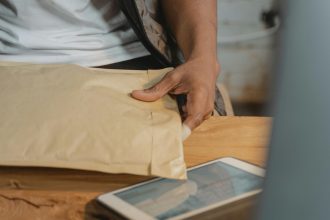Protecting Your Brand: What to Do When Your Product is Counterfeited on Amazon
If you’ve recently found yourself in a situation where counterfeit versions of your product are being sold on Amazon, you’re not alone. This is a challenge many entrepreneurs face, especially those who have put their heart and soul into developing unique offerings. Here’s a way to navigate this distressing situation and protect your brand.
Understanding the Impact
As the creator of a distinctive product, you understand the importance of your brand’s integrity. Discovering that over 100 listings are offering your product—complete with your images and promotional material—at a significantly reduced price can be alarming. This not only undermines your hard work but can also harm your reputation and bottom line.
Steps to Take When Facing Counterfeits
-
Document Everything: The first step is to gather evidence. Take screenshots of the listings, save copies of the images used, and compile any customer reviews that may indicate the counterfeit nature of the products. This documentation will be crucial for any further actions.
-
Report to Amazon: Amazon has protocols in place for reporting intellectual property infringement. Use the Amazon Brand Registry to file complaints against the counterfeit listings. Provide all the evidence you’ve gathered to support your claim.
-
Seek Legal Advice: Consult with a legal professional who specializes in intellectual property rights. They can guide you through the process of protecting your brand and may help you send cease-and-desist letters to the counterfeiters.
-
Consider Trademarking Your Brand: If you haven’t done so already, consider registering your brand and product names as trademarks. This can enhance your legal position and make it easier to enforce your rights against infringers in the future.
-
Strengthen Your Online Presence: While you address the counterfeiting issue, bolster your own online sales channels. Consider promoting your products through social media, launching special offers, or creating engaging content to draw customers to your official website.
-
Educate Your Customers: Make sure your customers know where to find authentic products. Use your website and social media platforms to explain the difference between genuine items and knock-offs, emphasizing the quality and value of your original product.
-
Stay Vigilant: Even after addressing the current counterfeiting issue, keep an eye on online marketplaces. Regular checks will help you catch any new counterfeit listings early on.
Moving Forward
Protecting your business from counterfeit threats requires diligence and action. By following these steps, you can reclaim control over your brand and ensure that your hard work doesn’t go unnoticed. Remember, you are not just defending a product; you’re safeguarding your passion and livelihood. Stay proactive, and don’t hesitate to seek help when navigating this challenging territory.










2 Comments
I’m sorry to hear about the challenges you’re facing with counterfeiting on Amazon. This is an unfortunate issue that many creators and business owners experience, but there are proactive steps you can take to protect your intellectual property and mitigate the impact on your business. Here’s a comprehensive plan to help you address this situation:
1. Document Everything
Before taking any actions, assemble all evidence related to the counterfeit listings. Take screenshots of the listings, noting the seller names, prices, and anything that shows they are misusing your intellectual property. Keep records of your original product design, trademarks, copyrights, and other relevant documentation that proves ownership of your product. This documentation will support your case when you report these issues.
2. Verify Your Trademark and Copyrights
Ensure that your product name, logos, and images are protected by copyright or trademark, if they aren’t already. If you own these rights, you’ll have a stronger case when addressing counterfeit sales. If not, consider registering your trademark and copyright as a preventive measure against future infringements.
3. Report to Amazon
Amazon has policies in place to handle counterfeit products. You should:
4. Consider a Legal Approach
If the counterfeit listings significantly impact your sales and business reputation, seek guidance from an attorney who specializes in intellectual property or e-commerce law. They can help you craft a cease and desist letter and may advise you on further legal steps.
5. Monitor Your Listings
It’s essential to keep regular tabs on your product’s presence on Amazon and other platforms. Set up alerts for your brand name and product details, so you’re immediately made aware of any new infringing listings. Tools like Google Alerts or dedicated brand protection services can help in monitoring.
6. Enhance Your Brand’s Online Presence
Strengthen your original sales channels to dilute the appeal of counterfeit products. This can include:
7. Educate Your Customers
Make sure your customers understand the risks associated with counterfeit products. Use your marketing platforms to educate them about the importance of purchasing from official sources, emphasizing the quality, warranty, and customer service that come with your genuine product.
8. Stay Proactive
As you implement measures to combat counterfeiting, stay proactive about your overall business strategy. Keep innovating and enhancing your product to maintain its value and appeal. Consider developing new products or features that can further distinguish your brand.
Conclusion
While dealing with counterfeits is undoubtedly stressful, taking a systematic approach can help you regain control over your brand. From legal measures to boosting your customer engagement, a combination of these strategies can strengthen your business and protect your hard-earned efforts. Remember that you’re not alone in this battle; many creators face similar challenges, and there are communities and resources available to offer support. Good luck!
Thank you for sharing this valuable guide on dealing with counterfeit products on Amazon. It’s disheartening to see how counterfeiters can undermine the creativity and hard work of genuine entrepreneurs. In addition to the steps you’ve outlined, I’d like to highlight the importance of community support and collaboration in combatting counterfeiting.
One approach that has proven effective for many brands is to engage with other businesses facing similar challenges. Forming alliances can amplify efforts to report counterfeiters and create a united front against infringement. Consider joining or forming industry-specific groups where members can share experiences, strategies, and even resources for legal support.
Additionally, utilizing platforms like social media for awareness campaigns can be a game-changer. By educating your customer base about the risks of counterfeits and encouraging them to report suspicious listings, you not only empower them but also create a loyal community around your brand.
Finally, keeping an eye on emerging technologies, such as blockchain for product authentication, could also provide long-term solutions for verifying genuine products. As brands continue to innovate in the face of counterfeiting, staying informed about new technologies and collaborative practices will be invaluable for protecting one’s brand.
Let’s continue to foster discussions about these issues and support one another in maintaining the integrity of our products!